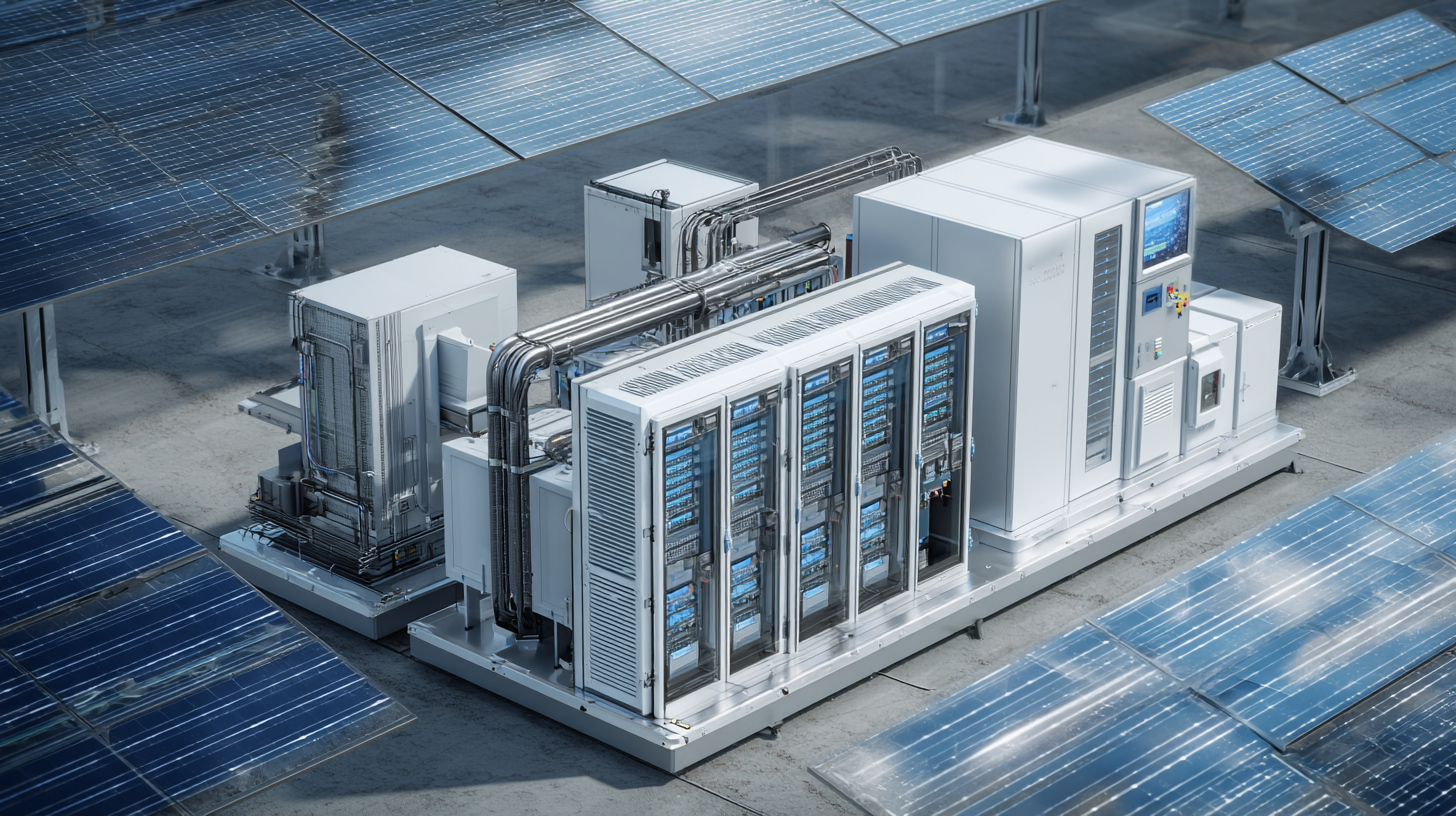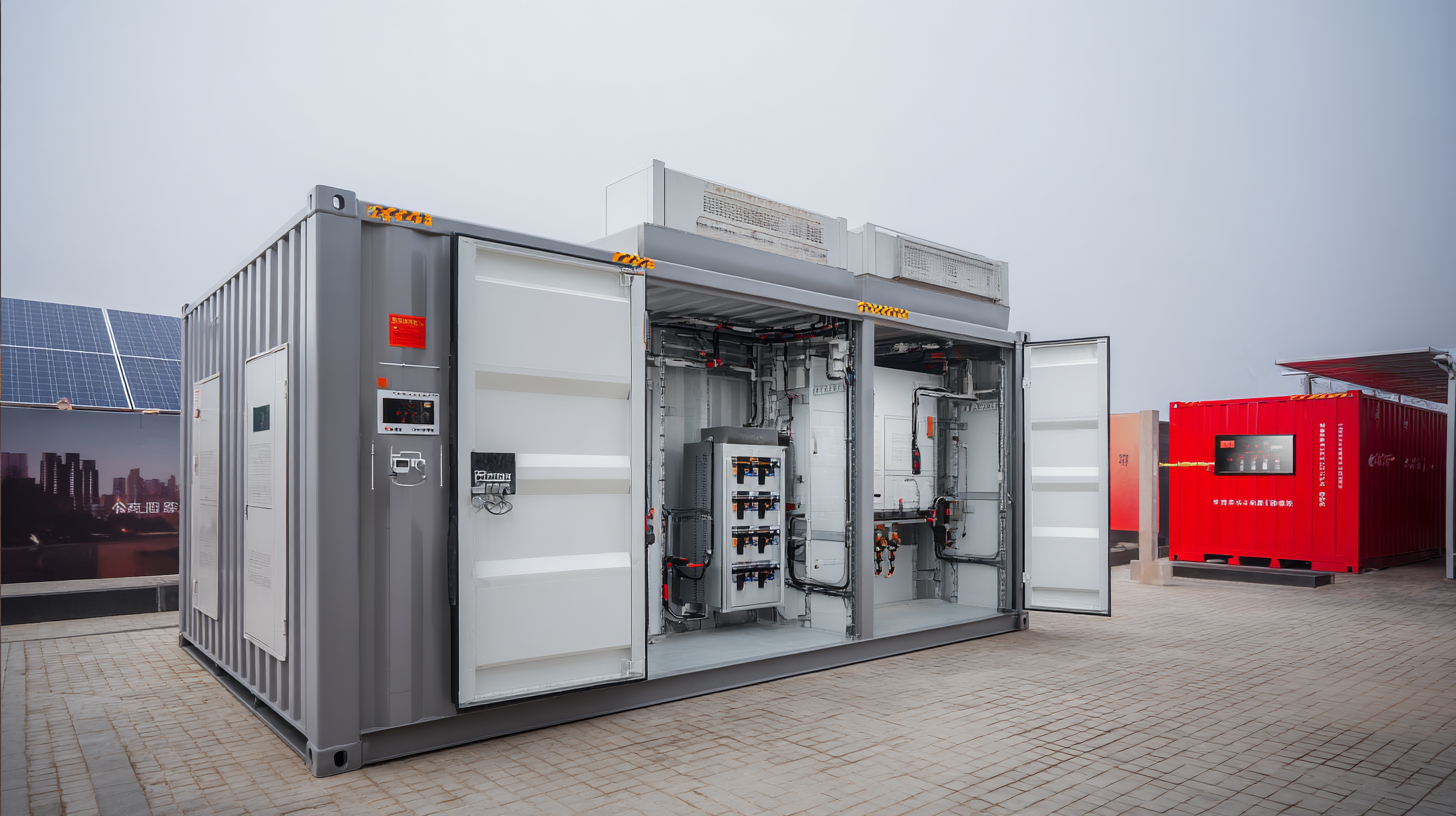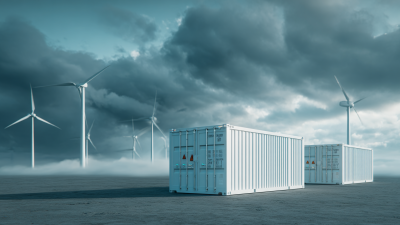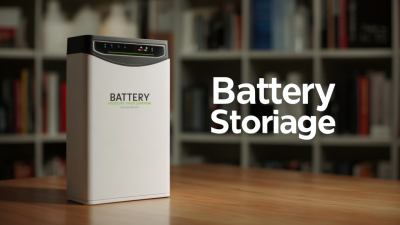Unlocking the Future: How Power Storage Batteries are Revolutionizing Renewable Energy Solutions
In an era where transitioning to renewable energy sources is paramount for a sustainable future, Power Storage Batteries are emerging as pivotal components in this transformation. These innovative systems are not only enhancing the efficiency of renewable energy generation but also addressing the challenges of energy intermittency. By harnessing and storing energy generated from sources such as solar and wind, Power Storage Batteries offer a reliable solution to meet our energy demands during peak times and when renewable resources are not readily available. This revolution in energy storage technology is driving significant advancements in grid stability, reducing reliance on fossil fuels, and ultimately paving the way for a cleaner, greener planet. In this article, we will explore the various types of power storage batteries, their applications in renewable energy systems, and the profound impact they are having on the energy landscape, showcasing how they are truly unlocking the future of energy solutions.

Understanding Power Storage Batteries: Types and Technologies for Renewable Energy
Power storage batteries are becoming an essential component in the renewable energy landscape, enabling more efficient energy use and management. Various types of batteries, including lithium-ion, flow batteries, and solid-state batteries, play pivotal roles in harnessing solar and wind energy. According to a report by Wood Mackenzie, the global energy storage market is projected to grow from 10 gigawatts (GW) in 2020 to over 200 GW by 2025. This surge is largely driven by the decreasing costs of battery technologies, with lithium-ion battery prices dropping more than 80% since 2010, making renewable energy systems more economically viable for consumers and businesses alike.
Moreover, innovations in power storage technologies are enhancing the integration of renewable sources into the grid. For instance, flow batteries are recognized for their scalability and long cycle life, making them suitable for large-scale storage solutions. The International Energy Agency (IEA) estimates that deploying robust energy storage systems could result in a 20% reduction in the overall costs of integrating variable renewable energy into grid systems by 2040. As these technologies continue to evolve, they will play a critical role in minimizing energy waste and ensuring a reliable, sustainable energy future.
Unlocking the Future: How Power Storage Batteries are Revolutionizing Renewable Energy Solutions
| Battery Type | Energy Density (Wh/kg) | Cycle Life (Cycles) | Cost per kWh ($) | Typical Applications |
|---|---|---|---|---|
| Lithium-ion | 150-250 | 500-1500 | 250-350 | Electric Vehicles, Grid Storage |
| Lead-acid | 30-50 | 300-500 | 150-200 | Backup Power, UPS |
| Nickel-metal Hydride | 60-120 | 300-500 | 300-600 | Hybrid Vehicles, Consumer Electronics |
| Solid-state | 200-400 | 1000+ | 400-600 | Electric Vehicles, Grid Applications |
| Flow Batteries | 20-40 | 5000+ | 300-500 | Large Scale Energy Storage, Renewable Integration |
The Role of Lithium-Ion Batteries in Enhancing Solar and Wind Energy Storage
The increasing reliance on renewable energy sources such as solar and wind has highlighted the need for efficient power storage solutions. Lithium-ion batteries have emerged as critical technology in enhancing the storage capabilities of these intermittent energy sources. Unlike traditional batteries, lithium-ion batteries boast a high energy density, allowing for significant amounts of energy to be stored and utilized when production peaks do not align with consumption needs. This capability is vital for maximizing the potential of solar panels during sunny days and wind turbines on breezy nights.
Furthermore, lithium-ion batteries facilitate smoother integration of renewable energy into the grid by providing stability and reliability. They can quickly charge and discharge, enabling them to respond effectively to fluctuations in energy demand. As these batteries continue to evolve, advancements in their lifespan, efficiency, and environmental impact promise to further refine their role in renewable energy systems. By bridging the gap between energy generation and consumption, lithium-ion batteries are not only revolutionizing energy storage but also paving the way for a sustainable energy future.
Evaluating Battery Capacity and Efficiency: Key Metrics in Renewable Energy Solutions
As renewable energy sources like solar and wind become increasingly prevalent, the role of power storage batteries is pivotal in enhancing their reliability and efficiency. Evaluating battery capacity and efficiency is crucial to maximize the potential of these green energy solutions. According to the International Energy Agency (IEA), the global deployment of battery storage systems is expected to grow nearly eleven-fold by 2030, reaching 600 GWh, which highlights the urgent need for effective metrics in evaluating capacity and efficiency.
Battery capacity, often measured in kilowatt-hours (kWh), indicates how much energy a battery can store and discharge. High-capacity batteries, such as lithium-ion technologies, offer significant improvements, boasting energy densities of around 250 Wh/kg compared to older technologies like lead-acid batteries, which only provide about 30-50 Wh/kg. Efficiency, expressed as a percentage of energy output to input, is equally vital; current lithium-ion batteries exhibit efficiencies above 90%, making them key players in the renewable energy landscape. Reports from BloombergNEF indicate that as battery technology advances, costs are expected to decline, potentially dropping below $100 per kWh by the mid-2020s, making storage systems more accessible and effective.

Impact of Emerging Battery Technologies on Grid Stability and Energy Transition
The emergence of innovative battery technologies is profoundly impacting grid stability and facilitating a smoother energy transition towards renewable sources. As the reliance on intermittent energy sources like solar and wind increases, the need for efficient energy storage solutions becomes paramount. Advanced batteries, such as lithium-ion and solid-state options, are capable of storing large amounts of energy generated during peak production times, thereby stabilizing supply and demand on the grid. By mitigating fluctuations caused by variable renewable energy sources, these technologies enhance the overall reliability of the electricity system.
Furthermore, the integration of next-generation batteries into the energy infrastructure creates opportunities for decentralized energy solutions. Community-based energy storage systems allow households and businesses to harness excess energy, effectively reducing dependence on traditional power sources and enhancing resilience against outages. As battery technologies continue to evolve, their scalability and affordability will further enable a broader adoption of renewable energy, accelerating the transition toward a sustainable energy future and ensuring a stable, reliable grid for all users.
Impact of Emerging Battery Technologies on Grid Stability and Energy Transition
Future Projections: Market Growth and Advancements in Energy Storage Solutions by 2030
The global energy storage market is expected to witness extraordinary growth in the coming years, with a projected compound annual growth rate (CAGR) of over 30% from 2021 to 2030, reaching an estimated market value of $550 billion. This surge is driven by the increasing adoption of renewable energy sources and the need for efficient energy management systems. According to the International Energy Agency (IEA), energy storage solutions are essential for balancing supply and demand, particularly as solar and wind power generation becomes more prevalent. By 2030, it's estimated that energy storage capacity could exceed 600 gigawatts (GW), a significant escalation from just 10 GW in 2020.

Technological advancements in battery technologies, such as lithium-ion batteries, are playing a pivotal role in this transformation. Reports indicate that the cost of lithium-ion batteries has declined by nearly 90% since 2010, enabling wide-scale deployment across various sectors, including residential, commercial, and electric vehicles. Moreover, innovations like solid-state batteries and flow batteries are emerging, promising even greater efficiency and longevity. As businesses and consumers increasingly turn toward sustainable solutions, the synergy between renewable energy and advanced energy storage is set to not only revolutionize the energy landscape but also contribute significantly to global decarbonization efforts by 2030.
Related Posts
-

Diving into Best Battery Storage Issues That Global Buyers Must Address
-

How to Choose the Best Energy Storage Battery for Your Business Needs
-

Essential Power Storage Battery Maintenance Checklist for Optimal Performance
-

Understanding the Future of Energy Storage Battery Technology Innovations and Applications
-

Exploring the Future: How Power Storage Batteries Will Transform Renewable Energy
-

How to Choose Best Battery Storage Solutions According to Industry Manufacturing Standards
